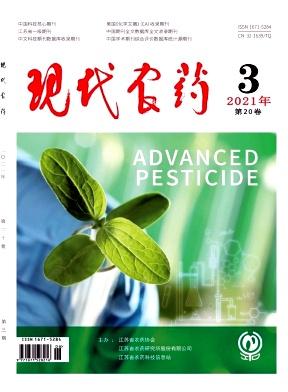Effects of Pesticides on the Arbuscular Mycorrhizal Symbiosis
引用次数: 0
Abstract
Substantial amounts of pesticides, used in agricultural production to control pests, diseases, and weeds, and thereby attain high product quantities and quality, can severely affect the ecosystem and human health. The amounts of pesticides used depend on the specifics of the current production system but also exhibit large effects of past practices. Pesticides do not act only on the target organisms but also on organisms for which the chemicals were not specifically formulated, constituting hazardous molecules for humans and the environment. Pesticides, therefore, also influence soil microbial communities including organisms that engage in mutualistic plant symbioses that play a crucial role in its mineral nutrition, such as arbuscular mycorrhizal fungi. In this review, we summarize the current knowledge on the effects of synthetic and natural (‘green’) pesticides (fungicides, herbicides, and insecticides) on arbuscular mycorrhizal symbiosis. We deal with both the direct effects (spore germination and extraradical and intraradical growth of the mycelium) and indirect effects on the agroecosystem level. Such indirect effects include effects through the spread of herbicide-resistant crops and weeds to neighboring ecosystems, thereby modifying the mycorrhizal inoculum potential and altering the plant–plant interactions. We also briefly discuss the possibility that mycorrhizal plants can be used to enhance the phytoremediation of organic pesticides.农药对丛枝菌根共生的影响
农业生产中为防治病虫害和杂草而大量使用农药,从而获得高产量和高质量的产品,可严重影响生态系统和人类健康。农药的使用量取决于当前生产系统的具体情况,但也受到过去做法的很大影响。农药不仅对目标生物起作用,而且对那些没有专门为其配制农药的生物也起作用,构成对人类和环境有害的分子。因此,农药也会影响土壤微生物群落,包括参与互惠植物共生的生物,如丛枝菌根真菌,它们在土壤的矿物质营养中起着至关重要的作用。在这篇综述中,我们总结了目前关于合成和天然(“绿色”)农药(杀菌剂、除草剂和杀虫剂)对丛枝菌根共生的影响的知识。我们处理直接影响(孢子萌发和菌丝体的根外和根内生长)和间接影响在农业生态系统水平。这种间接影响包括通过抗除草剂作物和杂草向邻近生态系统传播的影响,从而改变菌根接种势并改变植物与植物之间的相互作用。本文还简要讨论了利用菌根植物加强有机农药植物修复的可能性。
本文章由计算机程序翻译,如有差异,请以英文原文为准。
求助全文
约1分钟内获得全文
求助全文

 求助内容:
求助内容: 应助结果提醒方式:
应助结果提醒方式:


